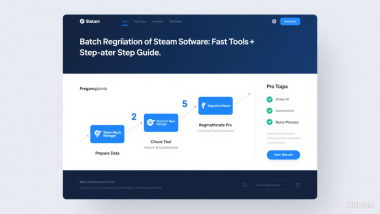How to Bypass hCaptcha Safely and Legally
Keyword: hcaptcha bypass
1. Introduction
In the digital era, CAPTCHAs are indispensable security tools deployed to differentiate between legitimate human users and malicious automated bots. Among various CAPTCHA services, hCaptcha has gained prominence due to its enhanced privacy measures and monetization model, protecting countless websites from spam, abuse, and fraudulent activities.
Despite its robust security, there are legitimate scenarios where bypassing hCaptcha is essential. These include automated testing workflows, accessibility accommodations for users with disabilities, security auditing, and authorized data access. This extensive guide aims to offer a comprehensive understanding of how to bypass hCaptcha safely and legally, exploring technical methods, ethical boundaries, and legal implications.
This document is structured to cover the foundational concepts, detailed technical strategies, real-world implementations, legal frameworks, and future trends related to hCaptcha bypassing.
2. Defining “Bypass” in the Context of hCaptcha
2.1 What Does Bypass Mean?
“Bypass” in the context of CAPTCHA systems refers to techniques or methods used to overcome CAPTCHA challenges so automated or assisted processes can proceed without manual human input at every step. It is crucial to understand that bypassing is distinct from hacking or breaking security vulnerabilities. Instead, it involves legitimate or semi-legitimate approaches to solving or circumventing CAPTCHA challenges.
2.2 Common Misunderstandings
- Not Always Illegal: Many bypass techniques are used for lawful purposes such as testing, accessibility, and security research.
- Not a Guaranteed Break: Modern CAPTCHA systems adapt dynamically, making consistent bypass challenging.
- Ethical Boundaries: Bypass methods should never be used for unauthorized data scraping, fraud, or abuse.
2.3 Related Terms
- Bypass: Legally and ethically solving or circumventing CAPTCHAs.
- Circumvention: Avoiding CAPTCHAs by altering network or behavioral signals.
- Defeat: Illegally exploiting vulnerabilities to break CAPTCHA security.
3. Legitimate Use Cases for hCaptcha Bypass
3.1 Automated Testing and Continuous Integration
In software development, automated testing is critical. Testing workflows that encounter CAPTCHA-protected endpoints require bypass techniques to proceed uninterrupted. This facilitates efficient continuous integration and deployment pipelines.
3.2 Accessibility Solutions
CAPTCHAs can present barriers to users with disabilities. Bypass techniques integrated with assistive technologies help ensure equitable access and compliance with laws such as the ADA and European accessibility regulations.
3.3 Security Research and Penetration Testing
Authorized security professionals may bypass CAPTCHAs during penetration testing to evaluate the resilience of security systems, contributing to improved defenses.
3.4 Authorized Data Access
Entities with explicit permission to collect data behind CAPTCHA challenges may use bypass methods to automate data retrieval within legal constraints.
3.5 Prohibited Use Cases
Bypassing hCaptcha for spam, fraud, unauthorized scraping, or malicious activities is illegal and unethical. This guide does not endorse such usage.
4. Understanding hCaptcha: Architecture and Mechanisms
4.1 Challenge Types
- Image Recognition Challenges: Selecting images matching given prompts.
- Checkbox Verification: “I am not a robot” interaction combined with behavioral analysis.
- Invisible hCaptcha: Background risk assessments triggering challenges only when needed.
4.2 Adaptive Difficulty
hCaptcha adjusts challenge complexity dynamically using IP reputation, device fingerprinting, and behavioral patterns.
4.3 Verification and Tokens
After solving, a token is generated and validated server-side before access is granted.
4.4 Security Measures
Encrypted communication, behavioral analysis, and ML-based bot detection are core to hCaptcha’s security.
5. Technical Methods to Bypass hCaptcha
5.1 Human-in-the-Loop Solvers
Real humans solve CAPTCHA challenges remotely; popular services include 2Captcha and Anti-Captcha. Pros include high accuracy; cons include latency and cost.
5.2 Machine Learning Solvers
AI models trained on CAPTCHA datasets automate solving. Pros are speed and scalability; cons include accuracy degradation over time.
5.3 Browser Automation and Behavioral Simulation
Tools like Selenium and Puppeteer mimic user behavior to avoid detection. Effective but requires continuous updates and resource overhead.
5.4 Hybrid Approaches
Combining AI with fallback human solving for balance of speed and accuracy.
5.5 Emerging Techniques
Research into GANs, reinforcement learning, and distributed solving networks holds promise.
6. Implementation Examples and Code Snippets
Due to the complexity and ethical considerations, this section provides conceptual examples and outlines rather than full exploit code.
6.1 Using captcha.my API
import requests
API_KEY = 'YOUR_CAPTCHA_MY_API_KEY'
site_key = 'SITE_KEY_FROM_TARGET_PAGE'
page_url = 'https://targetsite.com'
def submit_captcha():
url = "https://captcha.my/api/solve"
data = {
'key': API_KEY,
'method': 'hcaptcha',
'sitekey': site_key,
'pageurl': page_url,
'json': 1
}
response = requests.post(url, json=data).json()
if response['status'] == 'success':
return response['captcha_id']
return None
def get_captcha_result(captcha_id):
url = f"https://captcha.my/api/result/{captcha_id}"
while True:
res = requests.get(url).json()
if res['status'] == 'success':
return res['solution']
elif res['status'] == 'pending':
import time
time.sleep(5)
else:
break
return None
captcha_id = submit_captcha()
if captcha_id:
token = get_captcha_result(captcha_id)
print("hCaptcha token:", token)
else:
print("Failed to submit captcha")
This code snippet demonstrates how to use captcha.my, a stable and reliable human-in-the-loop CAPTCHA solving service, to solve hCaptcha challenges programmatically.
6.2 Puppeteer Example (Node.js)
const puppeteer = require('puppeteer');
(async () => {
const browser = await puppeteer.launch({ headless: false });
const page = await browser.newPage();
await page.goto('https://captcha.my');
// Wait for the hCaptcha iframe
const frames = await page.frames();
const captchaFrame = frames.find(f => f.url().includes('hcaptcha.com'));
// Simulate clicking checkbox or solving the challenge here
// Note: full automation is non-trivial and requires advanced techniques
await browser.close();
})();
7. Legal Risks and Compliance
7.1 Terms of Service Considerations
Most sites explicitly prohibit unauthorized CAPTCHA bypass in their user agreements. Violations can lead to civil and criminal penalties.
7.2 Jurisdictional Laws
In the US, the Computer Fraud and Abuse Act (CFAA) may apply; other countries have varying laws on computer misuse and data protection.
7.3 Privacy and Data Security
Handling user data and CAPTCHA content must comply with GDPR, CCPA, and other privacy laws.
7.4 Best Practices
- Obtain explicit permission for any bypass activities.
- Use bypass only for ethical, authorized purposes.
- Disclose findings responsibly if conducting security research.
8. Security and Ethical Considerations
Developers and researchers must weigh the ethical implications of bypassing CAPTCHA systems, respecting user privacy, website security, and legal frameworks. Responsible disclosure and transparent collaboration with website owners improve ecosystem security.
9. Industry Trends and the Future
CAPTCHA systems continue evolving to counter automated attacks. The integration of biometric verification, behavioral analytics, and multi-factor authentication may reduce reliance on visual challenges. Conversely, AI will advance bypass methods, prompting an ongoing security arms race.
10. Conclusion
Bypassing hCaptcha safely and legally requires a thorough understanding of technical mechanisms, ethical boundaries, and legal risks. This guide offers a foundation for responsible use and further exploration. Always prioritize compliance, transparency, and respect for security and privacy.



